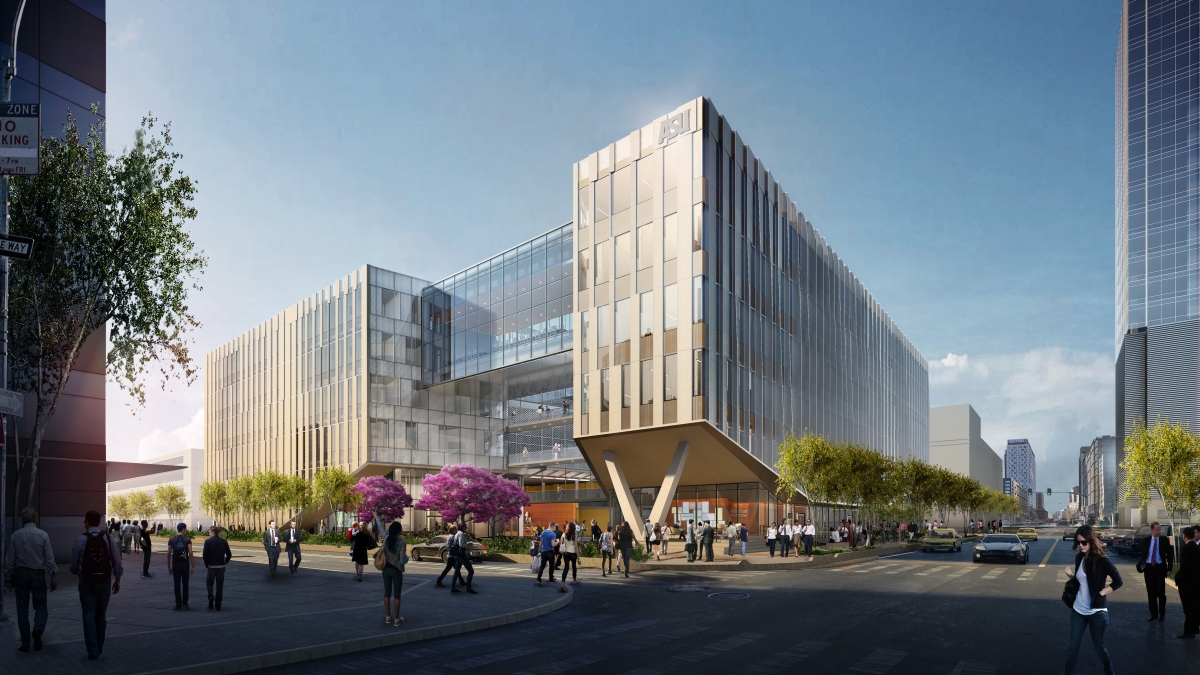New ASU law school building to break ground in downtown Phoenix

The official groundbreaking for Arizona State University’s new $129 million law school building in downtown Phoenix, the Arizona Center for Law Society, is set for Nov. 13.
The ceremony will take place at the northwest corner of Taylor and First streets, starting at 8 a.m. Attending the ceremony will be ASU President Michael M. Crow, retired U.S. Supreme Court Justice Sandra Day O’Connor and Doug Sylvester, dean of the Sandra Day O’Connor College of Law. Phoenix Mayor Greg Stanton and Michael Nowakowski, Phoenix councilman, are also expected to attend.
“The Arizona Center for Law and Society is another wonderful addition to our growing campus in the heart of Phoenix,” Crow said. “Having the Sandra Day O’Connor College of Law in downtown Phoenix fits perfectly with ASU’s mission of building strong learning and career connections with media, health care, corporate and government organizations for the more than 11,500 students at the downtown campus.”
Construction on the Arizona Center for Law and Society began in July. The new building will be ready for classes by August 2016. The College of Law currently occupies its home of almost 50 years, Armstrong Hall, on the Tempe campus. ASU and the College of Law are committed to ensuring that the Armstrong name will be honored in the new law school.
The Arizona Center for Law and Society is being funded by the City of Phoenix, which is providing land and $12 million, construction bonds through ASU and private donations. The College of Law has set a capital campaign goal of $50 million for construction of the building, and has raised more than $34 million so far.
“This could not have been possible without the generosity of our alumni and connected legal communities,” Sylvester said. “We are particularly honored that long-time Phoenix attorney Leo Beus and his wife, Annette, recently made a $10 million contribution to the building’s capital campaign. ”
The building is planned to be approximately 280,000 gross square feet with two levels of underground parking. It will have 18 rooms in which classes will be regularly scheduled, including one large lecture hall dedicated to university undergraduate education. Features of the new law school include a high-tech courtroom and an active learning classroom.
“Not only will the new law school have state-of-the-art learning facilities, it will also provide our students with incredible opportunities,” Sylvester said. “The downtown location is near the courts and the city’s legal district, which will prove invaluable to our students in the form of internships, externships and networking.”
The Ross-Blakley Law Library, currently located in a separate building near the law school in Tempe, will be moved to the new building. The library will occupy multiple floors and create the main circulatory structure of the center. The first floor of the building will have retail space consisting of a school bookstore and a café.
The Arizona Center for Law and Society will also include space for two think tanks, multiple centers with cross-disciplinary focus and the new ASU Alumni Law Group, the first teaching law firm associated with a law school.
The lead architects on the project are Ennead Architects and Jones Studios, with DPR Construction as the lead builder.

